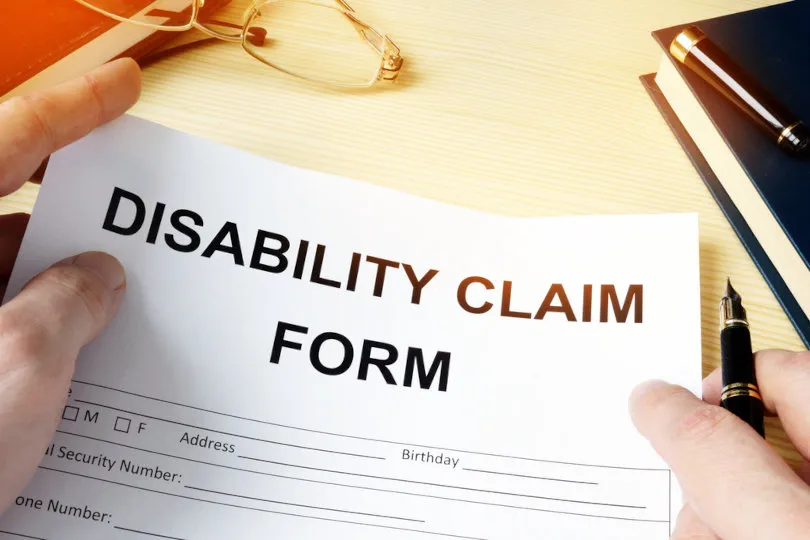Long-term disability insurance aims to replace a portion of your income if you’re unable to work due to a serious medical condition. Typically, these benefits start after a set period, known as the elimination period, and can continue for years or even until retirement age, depending on the policy.
Common Conditions that Qualify
A wide range of medical conditions can qualify for Long-Term Disability. These include both physical and mental health disorders. Some common examples include chronic illnesses like multiple sclerosis, cancer, heart disease, and mental health conditions such as severe depression and anxiety. The key factor is not the diagnosis itself, but how it impacts your ability to work.

The Application Process
Applying for long-term disability involves several steps. First, you need to obtain and complete the necessary forms from your insurance provider. This typically includes a claim form, a medical information form, and an employer statement. Providing comprehensive medical documentation is crucial. This may involve reports from your doctor, results from medical tests, and a detailed description of how your condition impacts your daily life and ability to work.
Medical Evaluation and Approval
Once you submit your application, the insurance company will review your medical information. They may request additional information or ask you to undergo an independent medical examination. The approval process can take several weeks or months, depending on the complexity of your case and the completeness of your application.
Managing Denials and Appeals
It’s not uncommon for long-term disability claims to be denied initially. If this happens, you have the right to appeal. The appeals process involves submitting additional medical evidence and possibly legal arguments to demonstrate your eligibility. Consulting with a lawyer experienced in disability law can be beneficial.
Maintaining Your Benefits
After approval, you’ll need to meet ongoing requirements to continue receiving benefits. This may include regular medical check-ups, updates on your health status, and efforts to return to work, if possible. It’s essential to understand and comply with these requirements to avoid losing your benefits.

Long-Term Disability and Mental Health
Mental health conditions often qualify for long-term disability, but proving their impact can be more challenging than physical illnesses. Conditions like severe depression, bipolar disorder, and anxiety disorders can be debilitating, impacting your ability to work. Documenting these conditions requires detailed records from mental health professionals and evidence of ongoing treatment and its impact on your daily functioning.
The Role of Medical Professionals in LTD Claims
Your healthcare providers play a critical role in your LTD claim. They provide essential medical evidence and detailed descriptions of your condition. It’s important to have open communication with your doctors and ensure they understand the specifics of your disability insurance. They need to provide thorough documentation about your diagnosis, treatment plan, and how your condition limits your work capacity.
Understanding Policy Terms and Conditions
Different policies have varying definitions of disability, coverage limits, and exclusions. Some policies consider you disabled if you’re unable to perform your current job, while others may not provide benefits unless you’re unable to perform any job. Understanding these terms is vital to determine if your condition qualifies under your specific policy.
The Impact of Pre-existing Conditions
Pre-existing conditions can complicate LTD claims. Many policies have clauses that limit or exclude coverage for conditions that existed before the policy’s effective date. Understanding how these clauses apply to your situation is crucial, as it can affect your eligibility for benefits.

Lifestyle Adjustments and Rehabilitation
In some cases, making lifestyle adjustments or participating in rehabilitation programs can be part of the LTD process. These efforts aim to help you manage your condition better and possibly return to some form of work. Compliance with recommended treatments and rehabilitation programs is often a condition for continuing to receive benefits.
Planning for the Future
While on long-term disability, it’s important to plan for your future. This might include financial planning, exploring alternative career options, or adapting to lifestyle changes due to your condition. Staying informed about your rights and benefits, and seeking professional advice when necessary, is key to managing your situation effectively.
Adjusting to New Realities
Adjusting to life with a long-term disability involves both physical and emotional adaptation. It’s crucial to recognize and address the mental health impacts of living with a chronic condition. Support from family, friends, and possibly mental health professionals can play a vital role in this transition. Accepting new limitations and finding new ways to engage in meaningful activities is often a key part of this journey.
Legal Considerations and Rights
Understanding your legal rights is essential when dealing with long-term disability claims. Laws such as the Americans with Disabilities Act (ADA) provide certain protections for people with disabilities. If you feel your claim has been unjustly denied or your rights violated, seeking legal counsel can be a crucial step. Disability attorneys specialize in navigating these complex situations and can provide guidance and representation.

The Importance of Advocacy and Support Groups
Joining advocacy groups or support networks for people with disabilities can offer emotional support, practical advice, and a sense of community. These groups often provide resources and information about navigating disability benefits, dealing with employers, and managing health conditions. They can also be a powerful voice for policy changes that benefit the disabled community.
Working with Employers and Workplace Accommodations
If you’re able to return to work in some capacity, understanding your rights to reasonable accommodations is important. Employers are generally required to provide accommodations that enable you to perform your job, as long as they don’t cause undue hardship to the business. This might include modified work hours, special equipment, or changes in job duties.
Insurance Policy Review and Updates
It’s advisable to regularly review your long-term disability insurance policy and stay informed about any changes. Insurance policies can change, and staying on top of these changes ensures that you are fully aware of your coverage and any actions you need to take.

In Summary
Navigating long-term disability involves understanding your medical condition, rights, and the specifics of your insurance policy. It requires collaboration with medical professionals, possible legal counsel, and personal advocacy. Adjusting to life with a disability is not just about managing a medical condition but also involves adapting your lifestyle, work, and plans for the future.

